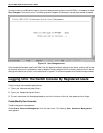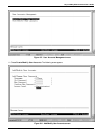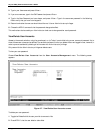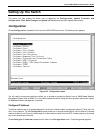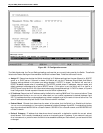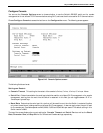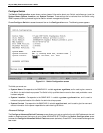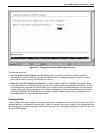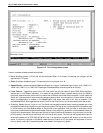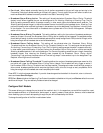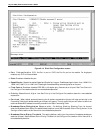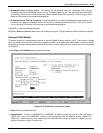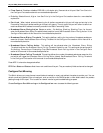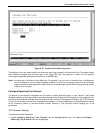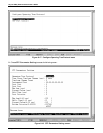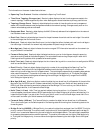
24-port NWay Ethernet Switch User’s Guide
Using the Console Interface 39
Figure 6-13. Port Configuration screen
Items in the above window are defined as follows:
♦ Port Specifies the port (1-22,all) that will be configured. When all is chosen, the settings you configure will be
applied to all UTP ports.
♦ State Enables or disables the port. This amounts to turning the port on or off.
♦ Speed/Duplex Selects the desired Speed and Duplex fort the port. Possible settings include: Auto, 100M/Full,
100M/Half, 10M/Full, or 10M/Half. Choosing Auto enables NWay auto-configuration on the port.
♦ Flow Control Toggles flow control On or Off. Flow control can only be used with other IEEE 802.3x-compliant
devices and in a full-duplex connection. It is useful during periods of heavy network activity when the Switch’s
buffers can receive too much traffic and fill up faster than the Switch can forward the information. In such cases, the
Switch will intervene and tell the transmitting device to pause to allow the information in the port buffer to be sent.
When Auto-Negotiation is enabled in the Speed/Duplex field above, flow control will only be enabled if the
connected device can Auto-negotiate flow control. Confirm that Flow Control is in force by checking the Status field.
♦ Priority Selects Normal, High or Low. The Switch has two packet queues where incoming packets wait to be
processed for forwarding; a high priority and low priority queue. The high priority queue should only be used for data
in which latency can have adverse affects on the function of an application, such as video or audio data, where
latency can produce distorted sounds and images. Packets in the low priority queue will not be processed unless the
High priority queue is empty. Setting the port priority to high will deliver all packets arriving at the port to the high
priority queue, a low setting will send them all to the low priority queue. The Normal settings causes the port to
examine the packet for an IEEE 802.1p/Q priority tag. If no tag exists, the packet will be sent to the low priority
queue. If the priority tag field in the packet header contains a value of 0-3, the packet will be placed in the low
priority queue; a value of 4-7 causes the packet to be placed in the high priority queue.



